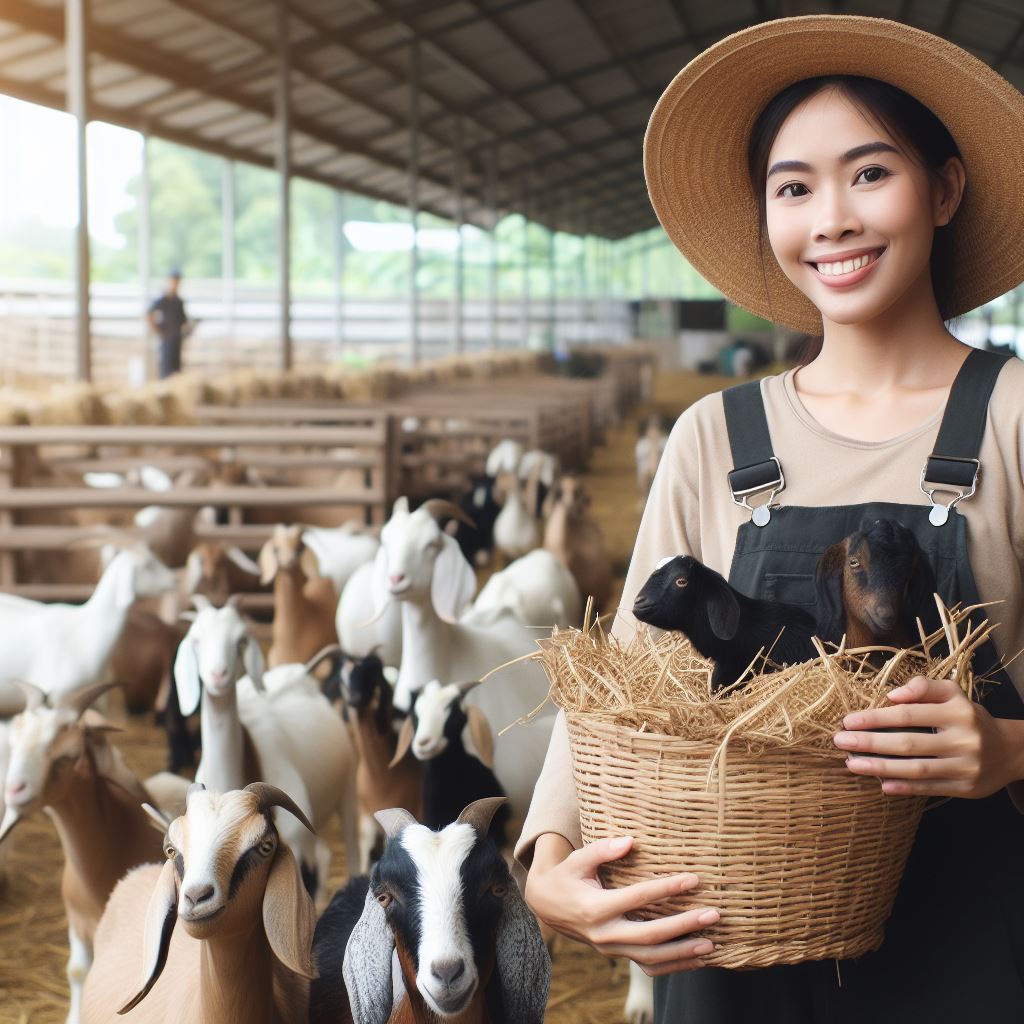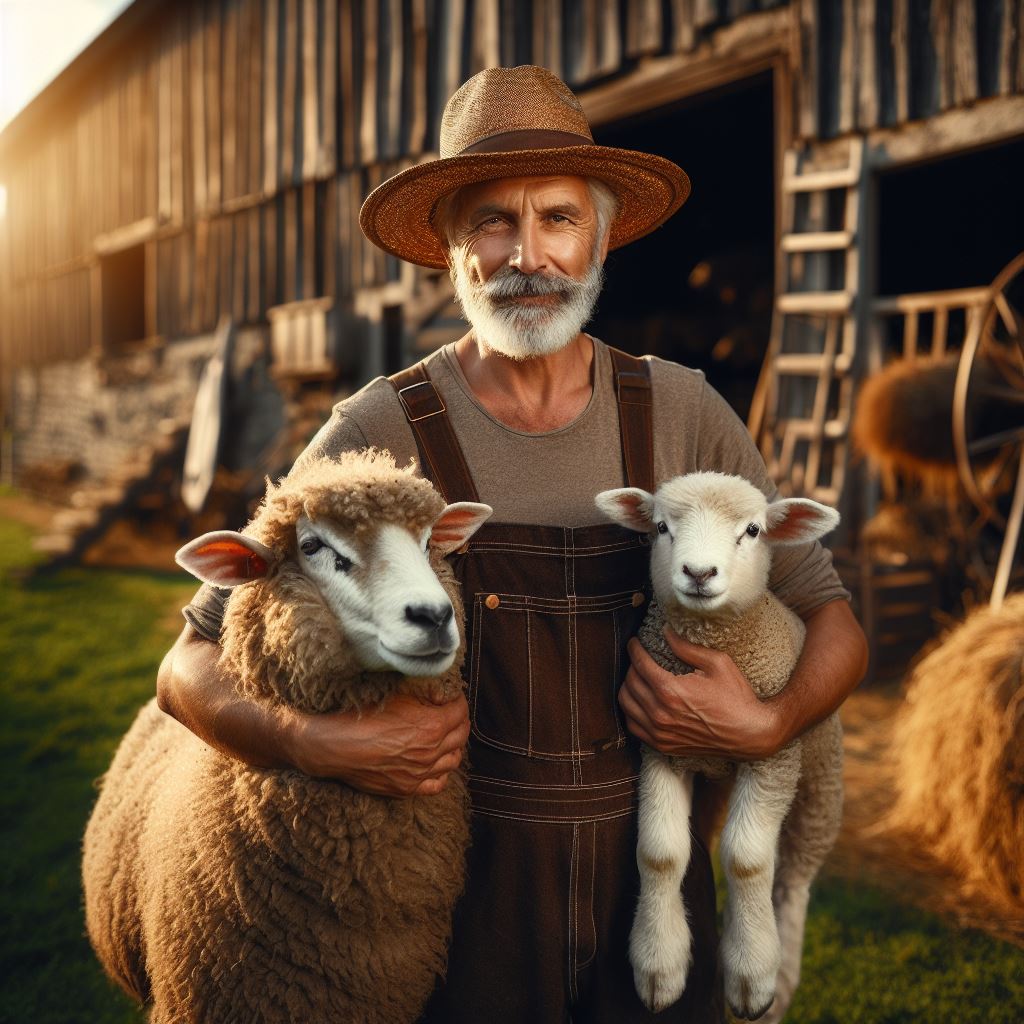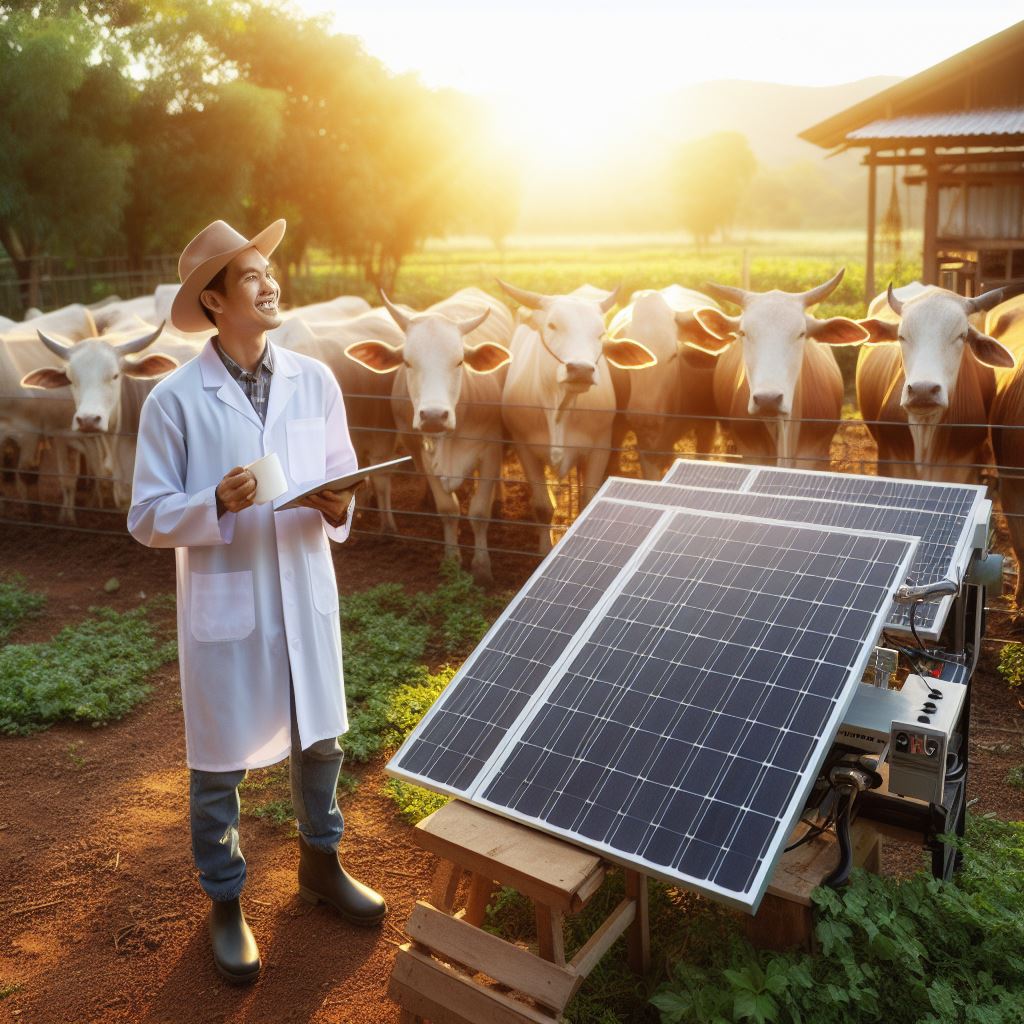Introduction
Goat breeding is a crucial aspect of livestock management, playing a significant role in sustainable agriculture.
Understanding the essentials of goat breeding is essential for successful and profitable farming.
Importance of Goat Breeding
Breeding goats not only ensures the continuation of the species but also helps improve herd genetics.
Selective breeding allows farmers to enhance desirable traits, like milk production, meat quality, and disease resistance.
Brief Overview of the Topic
In this blog post, we will delve into the essentials of goat breeding, guiding farmers on the intricacies involved in ensuring productive breeding programs.
We will explore various aspects, including breeding season, selecting breeding stock, and managing breeding cycles.
Breeding season is influenced by a variety of factors, such as geographical location, breed type, and climate.
It is crucial to identify the optimal time for breeding to increase the chances of successful conception.
Choosing the right breeding stock is vital since genetics play a significant role in determining the productivity of future generations.
Evaluating physical traits, pedigree, and health records can aid in making informed decisions.
Managing breeding cycles involves careful monitoring of doe’s estrus cycle, using methods like visual observation, heat detection aids, or hormonal treatments.
Ensuring proper nutrition and healthcare during pregnancy is also essential for a successful breeding program.
By comprehending the essentials of goat breeding, farmers can optimize their herd’s productivity, enhance genetic traits, and achieve their desired goals.
With careful planning and proper management, goat breeding can be both rewarding and profitable. Stay tuned for more insights in the upcoming chapters!
Selecting Breeding Stock
Characteristics of good breeding stock
- Genetic Traits: Choose individuals with desirable traits that align with your breeding goals.
- Health and Fitness: Ensure potential breeders are free from genetic disorders and have good overall health.
- Productivity: Select animals known for their high fertility and high milk/meat production.
- Temperament: Opt for breeding stock that displays calm and docile behavior to ensure easy handling.
Evaluating genetic potential
- Pedigree Analysis: Study ancestry records to understand the traits and breeding history of potential stock.
- Performance Records: Examine data on the individual’s progeny to assess their offspring’s performance.
- Physical Assessment: Observe the animal’s body structure, size, and muscularity to gauge its genetic potential.
- Experts’ Opinion: Seek guidance from knowledgeable breeders to weigh in on an animal’s genetic potential.
Importance of breed standards
- Preservation of Purebred Traits: Breed standards ensure the preservation of specific traits unique to a particular breed.
- Recognizable Identity: Following breed standards maintains consistency and helps identify purebred animals.
- Competitive Advantage: Animals meeting breed standards can participate in shows and competitions, enhancing their value.
- Market Demand: Many buyers prefer purebred animals that adhere to breed standards, increasing their marketability.
Avoiding inbreeding
- Genetic Diversity: Breeding unrelated animals from diverse lineages helps prevent the negative effects of inbreeding.
- Pedigree Analysis: Carefully assess the pedigree of potential mates to identify common ancestors or close relationships.
- Outcrossing: Introduce genetic material from other breeds to reduce the risk of inherited health issues.
- Line Breeding: Implement controlled breeding practices that maintain a specific bloodline while avoiding excessive inbreeding.
By considering these factors when selecting breeding stock, goat breeders can improve their livestock’s genetic traits and overall productivity, ensuring long-term success in their breeding program.
Transform Your Agribusiness
Unlock your farm's potential with expert advice tailored to your needs. Get actionable steps that drive real results.
Get StartedRead: Goat Nutrition: What Your Herd Needs
Preparing for Breeding
Age and physical readiness of does and bucks
It is crucial to ensure that both does and bucks are of the appropriate age and physically ready for breeding.
Ideally, does should be around 8 to 10 months old before their first breeding.
Bucks, on the other hand, should be at least one year old to ensure proper development and maturity.
Assess the readiness of the goats by examining their overall health, body condition, and reproductive organ development.
Nutritional requirements
Before breeding, it is essential to ensure that both does and bucks are receiving proper nutrition.
A well-balanced diet rich in essential nutrients such as protein, carbohydrates, vitamins, and minerals is crucial for reproductive success.
Consult a veterinarian or animal nutritionist to develop a diet plan that meets the specific needs of your goats.
Feed high-quality forage, grains, and supplements to maintain optimal body condition and reproductive health.
Vaccinations and health checks
Ensuring the health of your goats is vital for successful breeding.
Before breeding season, schedule a visit with a veterinarian to administer necessary vaccinations and perform health checks.
Goats should be protected against common diseases and parasites through vaccinations, deworming, and appropriate preventative measures.
A thorough examination of each goat’s overall health, including reproductive organs, will help identify any potential issues that may affect breeding success.
Estrus detection
Detecting estrus or the heat cycle is crucial when breeding goats.
During this period, does are receptive to mating and have the highest chances of conception.
Estrus signs include restlessness, mounting other goats, swollen vulva, and a clear discharge.
To ensure successful breeding, monitor your does closely for these signs and keep a record of their heat cycles.
This information will help you determine the best time for mating and increase the chances of successful pregnancies.
To summarize;
- Ensure the appropriate age and physical readiness of does and bucks for successful breeding.
- Provide a well-balanced diet with essential nutrients to support reproductive health.
- Schedule vaccinations and health checks before the breeding season to prevent diseases.
- Pay attention to estrus signs in does to determine the best time for mating and maximize conception rates.
By following these steps and being prepared, you can increase the chances of successful breeding in your goat herd.
Read: Organic Animal Health Care
The Breeding Process
Natural breeding vs. artificial insemination
When it comes to goat breeding, there are two primary methods to consider: natural breeding and artificial insemination.
Natural breeding involves allowing the buck and does to mate naturally, while artificial insemination requires the assistance of a breeder or veterinarian to collect and deposit semen into the doe.
Signs of heat in does
Recognizing the signs of heat in does is crucial for successful breeding.
Some common signs of heat include increased vocalization, mounting other does or objects, a swollen and red vulva, and a decrease in appetite.
Showcase Your Farming Business
Publish your professional farming services profile on our blog for a one-time fee of $200 and reach a dedicated audience of farmers and agribusiness owners.
Publish Your ProfileRegularly monitoring these behavioral and physical changes is essential for determining the right time for breeding.
Introducing the buck to the does
When introducing the buck to the does, it is important to keep both animals in separate enclosures first.
This allows them to become familiar with each other’s presence without direct contact.
After a few days, the buck can be introduced to the does, ensuring supervision to prevent any aggressive behavior or injury.
Gradual introductions and monitoring are crucial for a successful breeding process.
Breeding methods and techniques
There are various breeding methods and techniques to consider, depending on the specific breeding goals and circumstances.
Some commonly used techniques include pasture breeding, hand mating, and pen breeding.
Each method has its advantages and disadvantages, so it is important to choose the most suitable option for achieving desired breeding results.
When using pasture breeding, the does and buck are placed in the same enclosure, allowing natural mating to occur.
This method is less controlled but generally ensures high conception rates.
Hand mating, on the other hand, involves directly guiding and controlling the mating process.
This method requires more effort and time but allows breeders to select specific pairings and monitor each doe’s breeding history closely.
Pen breeding is another popular method, which involves using smaller enclosures or pens.
The buck is rotated among the does, ensuring controlled mating while providing sufficient rest periods.
This method allows breeders to manage the breeding process more effectively and maximize breeding efficiency.
Additionally, using synchronization techniques can further enhance the breeding process.
These techniques involve managing the does’ reproductive cycles, usually through hormonal treatments or light manipulation.
Synchronization helps breeders coordinate breeding and increase the likelihood of successful pregnancies, particularly when using artificial insemination.
In review, understanding the breeding process is vital for successful goat breeding.
Whether choosing natural breeding or artificial insemination, recognizing the signs of heat, introducing the buck properly, and implementing appropriate breeding methods are essential.
By carefully selecting the most suitable techniques and monitoring the process closely, breeders can achieve their desired breeding goals and ensure the health and well-being of their goat herd.
Read: Ethical Livestock Breeding Tips
Pregnancy and Gestation
Confirming pregnancy
There are several ways to confirm pregnancy in goats. These include:
Observing signs of heat in the doe, such as frequent urination and increased vocalization.
Performing a pregnancy test, either using a blood test or an ultrasound scan.
Engaging a veterinarian to conduct a manual palpation or a hormone test.
Pregnancy duration and milestones
Goat pregnancy typically lasts between 145 and 155 days, with an average of 150 days.
During this period, specific milestones occur:
- Days 1-40: Fertilization and implantation of the embryos in the uterus.
- Days 40-70: Rapid growth of the fetus and development of organs.
- Days 70-100: Visible growth of the abdomen as the fetus continues to develop.
- Days 100-145: Final stages of fetal development, including the formation of hair and horns.
Proper nutrition during gestation
A pregnant goat’s nutrition is crucial for the health of both the mother and the developing kids.
Key considerations for a nutritious diet during gestation include:
- Offering good-quality hay or forage to meet the increased energy and fiber requirements.
- Providing a balanced mineral supplement, including calcium and phosphorus.
- Ensuring access to fresh, clean water at all times.
- Avoiding sudden dietary changes that may cause stress or digestive disturbances.
Potential complications and how to handle them
Although goat pregnancies are generally straightforward, complications can occur.
Some potential complications include:
- Dystocia (difficult birthing): Seek immediate veterinary assistance if the doe shows signs of struggling during labor.
- Abortion: Monitor for signs of miscarriage, such as vaginal bleeding or a sudden decrease in appetite.
- Toxicity: Be cautious of plants, medications, or chemicals that may be harmful to pregnant goats.
- Metabolic disorders: Ensure adequate nutrition to prevent conditions like pregnancy toxemia or ketosis.
It’s essential to have a plan in place and consult with a livestock veterinarian in case of any complications.
Read: Managing Goat Health: Disease & Prevention

Kidding and Care of Kids
Signs of labor and kidding
- Restlessness, pawing the ground, and vocalization are signs that a goat is going into labor.
- Swollen udder, white discharge, and contractions indicate that kidding is imminent.
- Keeping a close eye on pregnant goats helps in identifying these signs and ensuring timely assistance.
Assisting with difficult births
- Difficult births, also known as dystocia, can occur in goats due to various reasons.
- If a goat fails to deliver after pushing for more than 30 minutes, intervention may be required.
- Assistance can include repositioning the kid, gentle pulling, or seeking veterinary help if necessary.
Proper care of newborn kids
- Immediately after birth, it is crucial to make sure that the kid is breathing and remove any mucus.
- Dry the kid using a clean towel and provide a warm, draft-free environment to prevent hypothermia.
- Observe the kid’s behavior, ensuring it stands and nurses within the first few hours.
- Regularly monitor kids for any signs of illness or weakness and provide necessary support.
Colostrum feeding and bottle-feeding if necessary
- Colostrum, the first milk produced by the mother goat, is essential for a kid’s immune system.
- Ensure that the kid receives colostrum within the first few hours after birth to obtain vital antibodies.
- If the mother is unable to produce enough milk or rejects the kid, bottle-feeding may be necessary.
- Use a suitable goat milk replacer and gradually introduce solid feeds as the kid grows.
Post-Breeding Care
Postpartum care does
- Provide a clean and comfortable environment for the doe to recover after kidding.
- Monitor her closely for any signs of complications such as retained placenta or mastitis.
- Ensure she has access to fresh water and nutritious feed to aid in her recovery.
- Administer any necessary medication as prescribed by a veterinarian.
Monitoring overall health of does and kids
Regularly check the does for any signs of illness or injury, such as abnormal vaginal discharge or lameness.
Observe the kids for normal growth and behavior, ensuring they are nursing and active.
Keep a record of any unusual symptoms or issues to discuss with a veterinarian if needed.
Vaccinations and deworming schedules
Consult with a veterinarian to develop a vaccination schedule tailored to the specific needs of your goat herd.
Ensure all does and kids receive appropriate vaccinations to prevent common diseases.
Follow a deworming protocol recommended by your veterinarian to control internal parasites.
Showcase Your Farming Business
Publish your professional farming services profile on our blog for a one-time fee of $200 and reach a dedicated audience of farmers and agribusiness owners.
Publish Your ProfileNutrition and feeding after kidding
Gradually reintroduce the doe to a balanced diet after kidding, starting with small, frequent meals.
Offer high-quality forage, such as grass hay, and gradually increase the amount as her appetite returns.
Supplement her diet with grain or commercial goat feed, taking into account her nutritional requirements.
Provide additional minerals and vitamins to support her recovery and lactation.
Read: Organic Livestock: Pros & Cons
Breeding Recordkeeping
Effective recordkeeping is a crucial aspect of successful goat breeding.
It serves as a reliable source of information that aids in making informed decisions, managing breeding programs, and ensuring the overall health and productivity of your herd.
Importance of maintaining records
Keeping accurate and detailed records allows breeders to keep track of various aspects related to their goats.
These records can include information such as births, deaths, pedigree, health, breeding history, and any treatments administered.
Not only do records help breeders stay organized, but they also enable them to identify any patterns or trends that may have a significant impact on their breeding goals.
It promotes transparency and accountability within the breeding program.
Tracking breeding dates and results
Recording breeding dates is essential as it helps breeders determine the expected due dates for each doe.
This information allows them to make necessary preparations, such as ensuring proper nutrition and providing appropriate housing options.
Furthermore, by tracking breeding results, breeders can analyze the success rates of their breeding attempts.
This data aids in identifying potential issues, such as fertility problems or low conception rates, allowing breeders to take appropriate measures to rectify them.
Monitoring genetic progress
Accurate recordkeeping enables breeders to monitor the genetic progress of their herd.
By maintaining detailed pedigrees, breeders can select suitable mating pairs based on desired traits and track how those traits are passed on from generation to generation.
By analyzing this data, breeders can make informed decisions regarding future breeding choices.
They can identify which animals possess desired traits and ensure those traits are perpetuated throughout the herd for continuous improvement.
Recording health issues and treatments
Keeping records of health issues and treatments is vital for monitoring the overall well-being of the herd.
By documenting specific health concerns and the corresponding treatments administered, breeders can track the effectiveness of their interventions.
This recordkeeping practice also enables breeders to identify recurring health issues or patterns.
It helps in recognizing potential outbreaks or symptoms that require immediate attention, ensuring the timely and proper management of goat health.
In essence, breeding recordkeeping plays a significant role in the success and management of goat breeding programs.
It provides breeders with valuable insights, aids in making well-informed decisions, and promotes the overall health and productivity of the herd.
Conclusion
Recap of key points
To conclude, proper goat breeding practices are essential for successful and healthy herds.
Ensuring adequate nutrition, regular veterinary care, and a clean environment are vital.
The importance of proper goat breeding practices
Breed selection and understanding genetics are also crucial in maintaining desired traits.
Proper goat breeding practices are paramount for a thriving herd.
Careful selection of breeding stock, attention to genetics, and meticulous mating management contribute to healthy offspring.
These practices not only ensure desirable traits but also optimize productivity.
By prioritizing proper breeding, goat farmers lay the foundation for a robust, sustainable, and genetically diverse herd, ensuring long-term success in the industry
Encouragement for further learning and research
Breeding goats requires knowledge and experience, so always continue learning and researching to improve your breeding practices.
With proper care and attention, you can achieve your breeding goals and have a thriving goat herd.




